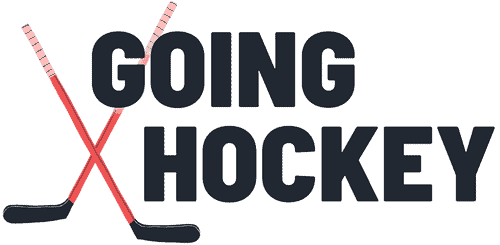In the world of ice hockey, “hockey hair” has carved out its own space, proudly displayed on the heads of players and fans alike; in this article, we embark on a journey to unravel the unique appearance of hockey hair, exploring its style, related slang, and cultural significance.
What is hockey hair?
Hockey hair that is long, styled back, and slightly messy. It’s a look that was popularized in the 70s and 80s, so much so that it earned its own cultural distinction, known colloquially as “hockey hair.”
The definition is simple, but there are still some key misconceptions and little-known facts about hockey hair that often go unaddressed.
What Is Hockey Hair?
“Hockey hair” is a term used to describe a distinctive hairstyle characterized by long, slightly messy hair that is typically styled back.
This hairstyle gained popularity during the 1970s and 1980s, especially among ice hockey players, and has since become a cultural symbol associated with the sport. It often features a carefree and rugged appearance, making it a recognizable and cherished aspect of hockey culture.
Hockey Hair Is Not A Mullet
While both “hockey hair” and a mullet involve longer hair at the back, they are not the same thing. The key distinction lies in their styling and cultural connotations:
Hockey Hair:
- Hockey hair is characterized by long, full hair that is styled back, often with a slightly messy or tousled appearance.
- It’s typically not as extreme as a mullet in terms of the contrast between the front and back lengths.
- Hockey hair is not necessarily associated with “business in the front and party in the back”; it’s more about a relaxed and full look.
- This style is popular among hockey players and fans, often seen as a symbol of the sport’s culture and the carefree attitude of players.
Mullet:
- A mullet is a hairstyle characterized by short hair at the front and sides of the head and significantly longer hair at the back.
- The mullet’s hallmark is the sharp contrast between the shorter, more conservative front and the longer, often flamboyant back.
- Mullets have a reputation for being a bit more polarizing and associated with various subcultures and stereotypes, including the “business in the front, party in the back” image.
- While the mullet can be worn in various ways, it’s typically a more deliberate and bold choice in terms of hairstyle.
In the 1980s, it’s true that some hockey players sported mullets as their hairstyle of choice.
However, it’s important to note that not all hockey players with longer hair during that era were necessarily adhering to the classic “hockey hair” style.
Some did have mullets, and some continue to do so today, but a mullet is a distinct hairstyle in itself and is still referred to as such.
While there may be an overlap in the choice of longer hair among some hockey players from the 1980s, and perhaps even today, the term “hockey hair” is typically reserved for a specific look characterized by longer, slightly messy hair styled back without the pronounced front-to-back contrast that defines a mullet.
Therefore, while both styles coexist within the realm of hockey culture, they remain separate and are each recognized by their unique characteristics and names.
Why Is Hockey Hair Called Lettuce?
The term “lettuce” and its synonym “salad” are slang expressions used within hockey culture to refer to a player’s hair, specifically their longer, flowing locks.
The use of these terms is often playful and informal, and they are used to describe the lush and leafy appearance of the hair, akin to the appearance of lettuce leaves in a salad.
The term “lettuce” really only applies to wavy or curly hair and is used to describe the way wavy hair can resemble the wavy leaves of romaine lettuce. Few people would call straight hair “lettuce.” They may instead use terms like “mop” or “flow.”
In essence, “lettuce” and “salad” are just colorful and humorous ways for hockey enthusiasts to describe the iconic longer hair that has become associated with the sport’s culture.
These terms add a touch of fun and camaraderie to discussions about players’ hairstyles, which can be a prominent and recognizable aspect of hockey culture, especially when it comes to “hockey hair” styles.
Why Do Hockey Players Have Long Hair?
Hockey players having long hair, often referred to as “hockey hair,” is more than just a hairstyle choice; it’s a cultural phenomenon deeply ingrained in the sport’s history and identity. Several factors contribute to the prevalence of hockey hair among players:
- Tradition and Superstition:
- Hockey players are known for their superstitions and rituals. Many players believe that growing out their hair brings good luck and helps them perform better on the ice. As a result, the tradition of letting their hair flow has been passed down through generations of players.
- Identity and Camaraderie:
- Hockey is a sport that thrives on camaraderie and team spirit. The shared experience of growing and maintaining hockey hair fosters a sense of unity among teammates. It’s a visual symbol of their commitment to the sport and their team.
- Rebellion Against the Norm:
- In a sport that often demands conformity in terms of uniforms and equipment, hockey hair provides players with a way to express their individuality and rebel against the clean-cut image associated with other sports. It’s a form of self-expression on and off the ice.
- Cultural Icon:
- Hockey hair has become a cultural icon associated with the sport. Its long, slightly messy, and back-swept style is instantly recognizable, and it has even earned its own colloquial term, “hockey hair.” Fans and players alike embrace this hairstyle as a symbol of their love for the game.
- Pop Culture Influence:
- The popularity of hockey hair extends beyond the rink. It has been featured in movies, TV shows, and commercials, further cementing its status as a cultural phenomenon.
In conclusion, hockey players have long hair, or “hockey hair,” for a combination of reasons that encompass tradition, superstition, identity, rebellion, and its status as a cultural icon. This unique hairstyle is a testament to the rich tapestry of hockey culture and its enduring appeal on and off the ice.


Leave a Reply